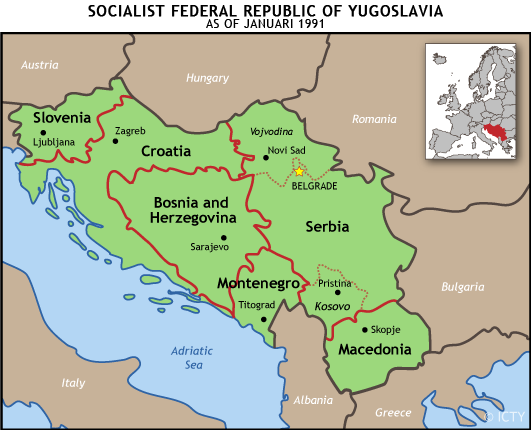Crisis Phase (November 29, 1945-April 7, 1963): The Constituent Assembly proclaimed the Federal People’s Republic of Yugoslavia on November 29, 1945. Josip Broz Tito served as prime minister, and Ivan Ribar was elected President of the Presidency of the People’s Assembly on December 29, 1945. A new constitution went into effect on January 31, 1946. The U.S. government provided diplomatic assistance (diplomatic recognition) to the Yugoslav government on April 19, 1946. The U.S. government provided economic assistance to the Yugoslav government beginning on January 6, 1951. The U.S. government provided military assistance to the Yugoslav government beginning on November 14, 1951. Josip Broz Tito was chosen as President of the Federal People’s Republic of Yugoslavia on January 14, 1953. The U.S. government ended economic and military assistance to the Yugoslav government on July 16, 1956, but resumed economic assistance on March 9, 1957. The Yugoslav parliament approved a new constitution on April 7, 1963, and the country was renamed the Socialist Federal Republic of Yugoslavia. Some 200,000 individuals were killed in political violence between March 1945 and April 1963.

Post-Crisis Phase (April 8, 1963-March 8, 1991): Petar Stambolić replaced Josip Broz Tito as prime minister on June 29, 1963. The parliament approved a new constitution on February 21, 1974. President Josip Broz Tito died on May 4, 1980, and he was replaced by a collective presidency on May 5, 1980. A new collective presidency took office on May 15, 1984. The Democratic Party (DP) headed by Konstantin “Kosta” Čavoški and Radoslav Stojanović and the Movement for Democratic Renewal (MDR) were established in Serbia on December 12, 1989. The Serbian Renewal Movement (SRM) headed by Vuk Drašković was established on January 6, 1990. Slobodan Milošević was elected president of the Socialist Party of Serbia (SPS), formerly the League of Communists of Serbia (LCS). Slobodan Milošević was elected president of the Socialist Federal Republic of Yugoslavia with 65 percent of the vote on December 8, 1990.
Crisis Phase (March 9, 1991-April 27, 1992): Government troops suppressed anti-communist demonstrations by some 100,000 individuals led by Vuk Drašković in Belgrade on March 9, 1991, resulting in the deaths of two individuals. Stjepan “Stipe” Mesić was elected president of Yugoslavia on June 30, 1991. President Stjepan “Stipe” Mesić resigned on December 5, 1991. The Federal Assembly adopted a constitution for the Federal Republic of Yugoslavia (Serbia and Montenegro) on April 27, 1992.
[Sources: Banks and Muller, 1998, 1028-1036; Beigbeder, 1994, 53, 261-262; Clodfelter, 1992, 811-812, 894-896; Dedijer et al. 1974; Ference, 1994, 393-436; Jessup, 1998, 820-823; Keesing’s Record of World Events, March 1991; Langer, 1972, 1021-1023, 1207.]
